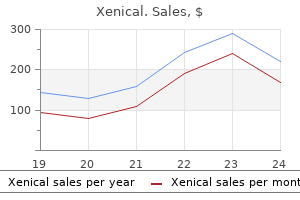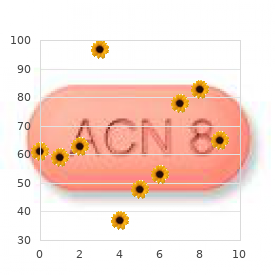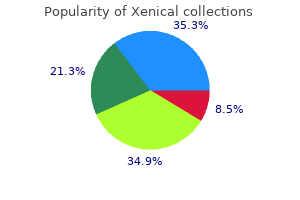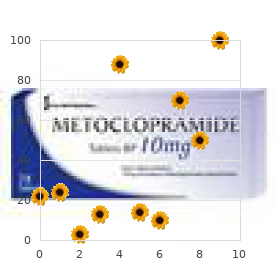Only $0.76 per item
Xenical dosages: 120 mg, 60 mg
Xenical packs: 30 pills, 60 pills, 90 pills, 120 pills, 180 pills, 270 pills
In stock: 925
8 of 10
Votes: 272 votes
Total customer reviews: 272
Description
Diagnosis: Different viruses causing viral gastroenteritis cannot be distinguished based on the clinical presentation weight loss 6 weeks cheap 60 mg xenical with mastercard. Treatment and Prevention: Viral gastroenteritis is not treatable by any specific therapy; rather, treatment is supportive to provide and maintain hydration. Severe rotavirus-induced illness can be prevented or attenuated by vaccination with live virus vaccines. In the United States, they cause disease with peak incidence in the winter months. Are the leading cause of viral gastroenteritis in adults and the second leading cause of severe disease in children. Are associated with disease in diverse settings, including schools and childcare centers, nursing homes, vacation settings. In the United States, fewer than 500 children per year die from infectious diarrhea, but more than 200,000 children under age 5 are hospitalized for diarrhea-induced dehydration. Before the 1970s, although viral agents were suspected to cause diarrhea, the only etiologic agents for diarrhea that could be diagnosed were bacteria or protozoa. Viral agents of diarrhea were difficult to identify because they do not grow well in cultured cells. In the 1970s, electron microscopy allowed detection of viruses in stool specimens, and in 1972, Norwalk virus, a norovirus that is a type of calicivirus, was the first agent of viral diarrhea identified by electron 382 Chapter 37: Rotaviruses, Noroviruses, and Other Viral Agents of Gastroenteritis 383 microscopic analysis of stool. When a convalescent serum specimen was mixed with a diarrheal stool specimen, clumped virions were observed, suggesting an immune response had been elicited by a pathogenic virus. Noroviruses are now recognized as the most common cause of outbreaks of viral diarrhea in adults and the second most important cause of diarrhea in children. In 1973, rotavirus was identified by electron microscopic examination of stool specimens. Rotavirus is now known to be the most commonly recognized agent of gastroenteritis in children. Four additional viral agents of gastroenteritis have been identified: enteric adenoviruses, sapoviruses, astroviruses, and Aichi virus (Table 37-1). Since 40 to 50% of diarrhea cases are still of uncertain etiology, it is likely that additional viral agents will be discovered as causes of gastroenteritis. The peak incidence of primary (or initial) rotavirus infection in the United States occurs between 6 months and 2 years of age. Most individuals have experienced infection and are immune to severe rotavirus disease by age 4. Seropositive older children or adults who are reexposed to a high inoculum of virus or who become immunocompromised may experience mild illness. Parents of young children experiencing a primary rotavirus infection may have mild symptoms. Certain individuals known to be at increased risk for complications of dehydration due to viral gastroenteritis include malnourished children and adults, particularly in developing countries, and the elderly, who may experience waning immunity with age.

Red cedar (Eastern Red Cedar). Xenical.
- Are there any interactions with medications?
- What is Eastern Red Cedar?
- Cough, bronchitis, rheumatism, venereal warts, and skin rash.
- How does Eastern Red Cedar work?
- Are there safety concerns?
- Dosing considerations for Eastern Red Cedar.
Source: http://www.rxlist.com/script/main/art.asp?articlekey=97062
Damage: Polioviruses can cause asymptomatic infection weight loss apps buy xenical 120 mg amex, aseptic meningitis, or flaccid paralysis. Other enteroviruses may cause aseptic meningitis, myocarditis (heart), pleuritis (lung), herpangina (pharynx), febrile rashes, or other manifestations. Diagnosis: Suspected polio warrants viral detection with nucleic acid amplification and culture. Clinical features of most enterovirus infections are Spread and Replication: Rhinoviruses infect the upper respiratory tract and cause mild infections (common cold) but also can produce severe lower respiratory tract disease. Damage: Probably cause damage by mechanisms other than virus-induced cytopathology. Prevention: Rhinoviruses comprise more than 100 serotypes, making development of an effective vaccine difficult. Moreover, detecting the virus in patients is not sufficient for diagnosis because of the high frequency of asymptomatic infection. Prevention: Poliovirus infection can be prevented with either an inactivated vaccine (Salk) or an infectious, attenuated vaccine (Sabin). Rhinoviruses Encounter: Transmitted person-to-person through contamination or aerosols. The genus Enterovirus consists of 10 species, of which 7 contain human pathogens: human enterovirus AD and human rhinovirus AC. There are three antigenic types, or serotypes, of polioviruses; most epidemics were caused by type 1. Other enteroviruses include coxsackieviruses, first isolated during a polio outbreak in Coxsackie, New York, and echoviruses (for "enteric cytopathic human orphan viruses"). Echoviruses were so named because they were initially isolated from the feces of individuals who had no symptoms, and the viruses could not be linked to any human disease. More recently discovered enteroviruses are simply assigned a number, as in enterovirus 70. Rhinoviruses, which are respiratory pathogens, are now classified within the enterovirus genus based on sequence homology. Information about the biology and replication of this virus, and comparisons of the nucleotide and amino acid sequence of the viral genome with that of other picornaviruses, led to reclassification of hepatitis A virus into a separate genus, hepatovirus. Nine of the eleven cases were boys 12 to 17 years of age, and all nine were members either of the football or soccer team. The clinical histories of those patients were similar: They reported "flulike" symptoms, fever up to 39°C, sore throat, and muscle pains.

Specifications/Details
Hydrogen peroxide weight loss 9 year old 120 mg xenical buy free shipping, while bactericidal, does not work alone in killing microorganisms within phagocytes. Rather, an enzyme called myeloperoxidase uses peroxide to convert chloride ions into the highly toxic hypochlorous ions, the same chemical found in common bleach. Myeloperoxidase is delivered to the phagolysosome by fusion with the azurophil granules. Such defects render their phagocytes incapable of producing the reduced oxygen products. These cells can phagocytize and degranulate, but they fail to kill the ingested bacteria. Interestingly, microorganisms that lack catalase, such as the streptococci, obligingly release H2O2 into the phagocytic vacuole when phagocytized, thereby committing suicide. Thus, pneumococci (a species of streptococci) do not cause disease any more frequently in such patients than they do in normal persons. These patients develop subcutaneous abscesses, lung abscesses, hepatic abscesses, lymphadenitis, pneumonias, and osteomyelitis. The activity of these proteins may account for the survival of some children with chronic granulomatous disease. The oxygen-independent mechanisms also account for bacterial killing under the highly anaerobic conditions found in deep abscesses. However, combined action of both oxygen-dependent and oxygen-independent mechanisms is needed for most efficient bacterial killing. Deficiencies in cationic proteins have been described in patients with chronic skin infections and abscesses. A genetic disease known as the Chediak-Higashi syndrome is caused by the formation of large granules in neutrophils, which are poorly functional and substantially reduce the killing power of these cells. How do various kinds of bacteria differ in their sensitivity to the two bactericidal mechanisms of neutrophils In general, organisms found in the gut, such as Gramnegative rods, are readily killed by the oxygen-independent mechanism. Gram-positive bacteria, like those found on the skin and in the upper respiratory epithelia, tend to be resistant to oxygen-independent killing and are killed chiefly by the oxygen-dependent pathway. Killing by Monocytes and Macrophages Together, monocytes and macrophages serve to mop up what is left at the scene of the battle between microorganisms and neutrophils. Their mechanisms of chemotaxis, phagocytosis, and microbial killing resemble those of the neutrophils. However, human monocytes and macrophages do not make nitric oxide in any significant amounts; thus, the contribution of nitric oxide to microbial killing by these cells is negligible. In humans nitric oxide is made in small amounts by fibroblasts, some neurons, and cells of the vasculature, where nitric oxide may perform some vasoactive and transmitter functions. An important point is that monocytes and macrophages, unlike the neutrophils, continue to differentiate after they leave the bone marrow and become activated when properly stimulated.
Syndromes
- Uncontrolled phenylketonuria (PKU) in the mother
- Slight fever
- Bronchoscopy -- camera down the throat to see burns in the airways and lungs
- Sit down to use the toilet and stand up after using the toilet
- Throbbing pain along the affected area
- Brain CT scan
- Arrive at the hospital on time.
- Frequent or repeated nosebleeds

Therefore weight loss pills plexus order xenical 120mg without prescription, when polyclonal antiserum is used in a diagnostic test, the likelihood is high that unwanted cross-reactions with other microorganisms will occur. The principles illustrated in the figure apply to all antibodybased methods of diagnosis, including the serologic antigen detection tests described in the next few sections of this chapter. Polyclonal antisera are crossreactive because bacteria A and B have protein antigens in common. Additionally, monospecific antiserum raised against a single antigen of bacterium A is also cross-reactive, because one of the antibody-binding sites (epitopes) on this antigen is shared by an antigen of bacterium B. However, a monoclonal antibody against an epitope on this antigen was found to be unique to bacterium A and to have no cross-reactivity. However, in many situations, culturing may not be sensitive or clinically practical. Culture is routine for most bacterial and fungal infections but is rarely performed for helminthic and protozoal pathogens. Some microorganisms cannot be cultured at all in clinical microbiology laboratories. Because chlamydiae and viruses are obligate intracellular pathogens, they can be propagated and identified only in appropriate cell cultures. Cultivation of other pathogens, such as rickettsiae and mycoplasmas, is shunned by most clinical laboratories because of the hazards involved in handling the microorganisms. For example, when a specimen of pus from a brain abscess is cultured, the implied question is, "What microorganisms are present in the abscess To look for the etiologic agents, the sample is cultured on a variety of agar-based media and in a broth medium under both aerobic and anaerobic conditions. The culture strategy is to recover all microorganisms that might inhabit a brain abscess. In contrast to that open-ended approach, other cultures are performed primarily to determine whether a particular pathogen is present or not. An example is the throat culture for Streptococcus pyogenes in cases of exudative pharyngitis, because that is the common culturable bacterial agent for which treatment is indicated. An example of a selective medium is Thayer-Martin medium, used to culture gonococci. Thayer-Martin is a chocolate agar (made with boiled blood, not chocolate) containing antibiotics that inhibit the growth of members of the normal microbiota in the genitourinary tract but not gonococci. Selective and semiselective media are also used to cultivate enteric pathogens from the bacteria-rich stool specimens or respiratory pathogens from sputum. One disadvantage of selective media is that they can inhibit the growth of some strains of the pathogen of interest. Therefore, selective media should be used only for specimens that are likely to contain contaminating normal organisms. As with all diagnostic methods, culture results require interpretation by the physician.
Related Products
Additional information:
Usage: ut dict.

Tags: xenical 60 mg buy on-line, buy discount xenical 120 mg on-line, cheap xenical 120 mg overnight delivery, xenical 60 mg order visa
Customer Reviews
Real Experiences: Customer Reviews on Xenical
Karlen, 52 years: As with plague, transmission of the infection among those animals occurs through the bites of ticks, flies, and mosquitoes. This formidable list invites speculation: why are so many virulence factors needed Perhaps these factors do not individually impart virulence but act in concert to permit the pathogen to cause disease. For example, streptokinase produced by Streptococcus pyogenes activates plasminogen and converts it to plasmin, a serum protease that in turn attacks fibrin clots. In addition to providing clues about the cause of the disease, erythema migrans helped link Lyme disease in the United States to certain syndromes in Europe.
Leon, 49 years: Antibodies that prevent molecule-to-molecule interaction between microbe and host cells are termed neutralizing antibodies. The principal viruses that cause disease in humans belong to about a dozen families containing hundreds of species (Table 31-1. The disease it produces, whooping cough, can be virtually eliminated by vaccination. The capillaries from the nutrient arteries of bone make sharp loops close to the growth plate.



